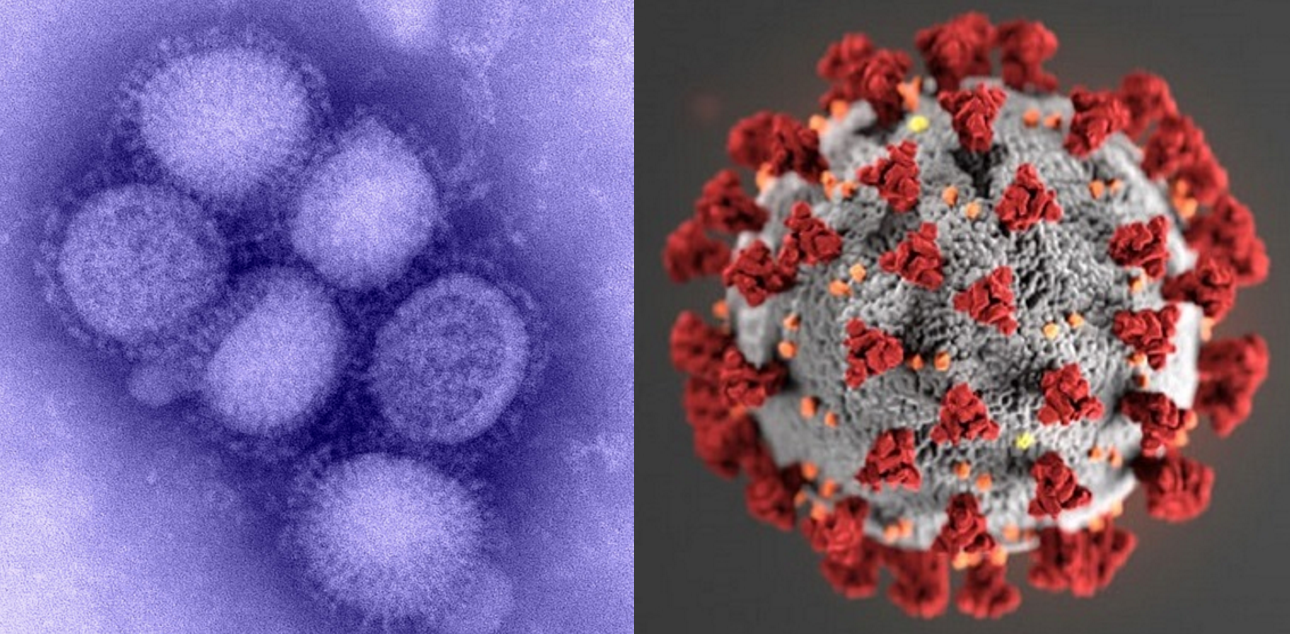Your donation will support the student journalists of The Tide, Richard Montgomery High School's student newspaper. Your contribution will allow us to purchase equipment and cover our annual website hosting costs.
Comparing quarantine experiences: swine flu 2009 vs. COVID-19 2020
April 23, 2020
When I was seven years old, I boarded a series of flights as an unaccompanied minor from Portland, Maine to Beijing, China. I was excited to spend the summer of 2009 with my grandparents—they live in a city of 6.5 million people about 800 kilometers from Beijing.
Unbeknownst to me at the time, someone on one of my flights had swine flu. According to the CDC, the swine flu pandemic lasted from Jan. 2009 to Aug. 2010. Globally, the disease affected predominantly children as well as young and middle-aged adults.
The airline tracked down me and, presumably, the other passengers on the flight. The exact details are a bit fuzzy, but I still remember the general gist of instructions that were given to my grandparents.
I was not to leave my grandparents’ house. Nobody else was allowed inside. My grandparents were allowed to leave to buy groceries, but that was it. Each day, they were tasked with taking and reporting my temperature. The part that stands out to me the most is how there were two people assigned to sit in front of my grandparents’ building to ensure that we followed the rules.
For however long I was quarantined—I don’t remember exactly but I think it was a week or two—I was incredibly bored. I barely understood enough Chinese to watch TV. I read through the books I’d brought with me. I couldn’t play with my cousins or explore the city. I planned on having an incredibly fun summer with my extended family yet I couldn’t even leave my grandparents’ house.
Finally, when I was deemed not to have swine flu, I could proceed with life as planned.
That quarantine experience is nothing like the one that I’m experiencing right now.
For starters, there’s the level of awareness about the disease. My seven-year-old self did not know what swine flu was; all I knew was somebody on my flight was sick and I had to be quarantined to minimize the risk of getting other people sick.
On the other hand, COVID-19 has taken over the news for the past few months. While young children are admittedly placed in a bubble and not up to date with all of the world’s happenings, I definitely think there’s been significantly more coronavirus coverage than swine flu.
The next thing I’d like to address is the level of restriction. In 2009, I wasn’t allowed to leave and other people weren’t allowed to come in. In 2020, Governor Larry Hogan has issued a stay-at-home directive for the state of Maryland—residents should not leave their homes unless it is essential, but essential is loosely defined. People are still allowed to go to the store, take walks and hike.
This is an interesting point because I think part of it stems from how different countries choose to handle a pandemic. I was quarantined because of swine flu in China; I’m currently quarantined because of COVID-19 in the United States.
However, my relatives in China have had a completely different COVID-19 quarantine experience from me. My grandparents temporarily moved in with my aunt. Each home in my aunt’s neighborhood was given a pass for one person to leave once every three days for essential tasks such as buying groceries. Seeing as COVID-19 is more damaging to the elderly, my aunt ventured outside each time; my grandparents had not gone outside for more than a month.
I definitely think the Chinese government’s response to coronavirus has been far more successful than ours. According to Worldometer at the time that I am writing this article, there have been 82,798 coronavirus cases, 4632 deaths, and 77,207 recoveries in China—for the most part, there have been fewer new cases each day. According to the same source, there have been 849,092 cases, 47,681 deaths, and 84,050 recoveries in the United States, with the number of daily new cases still frighteningly high.
The main difference between my two quarantine experiences is the level of uncertainty. At age seven, I knew how long I’d be quarantined from the very start—unless, of course, I began showing symptoms of swine flu. Since my experience occurred over summer break, I wasn’t missing out on much in terms of education.
At age eighteen, my final few months of high school have been stripped away from me. It’s been six weeks since Governor Hogan announced his initial decision to close Maryland schools. I’ve missed out on the CSPA conference, my final Black Maskers production and my last few performances with the RM Jazz Ensemble. AP testing has moved to online and IB exams have been cancelled. I’ve accepted the fact that prom and graduation will most likely be cancelled.
Worst of all, nobody knows how long this will last, so there’s a chance that I’ll start college online in the fall. As a music minor, I dread the thought of attending ensembles and private lessons virtually.
I urge those of you at home to keep staying home, washing your hands and taking care of yourselves. I’d like to thank essential workers for risking their lives to protect and help the rest of us. I urge the United States government to take more definitive action against the spread of COVID-19.
